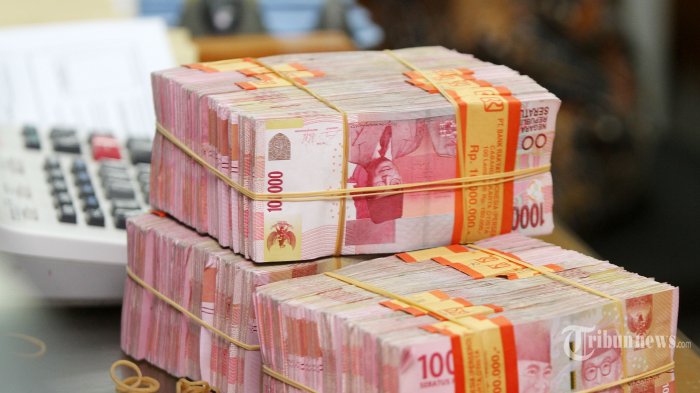
IMPACT OF RUPIAH DEPRECIATION: COMPLETE DEBT RATIO
JAKARTA - For the first time since 2009, the
ratio of government debt compared to gross domestic product (GDP) as of August
2018 broke at 30.31%. The swelling of the debt ratio was triggered by the
impact of rupiah depreciation.
Although it is still below the baseline
stipulated in the State Finance Law, which is 60%, the achievement has slightly
missed the government's target of around 29%.
Ministry of Finance data shows that the total
debt as of August 2018 reached Rp.4,363.19 trillion, up 12.3% compared to the
total debt in August 2017 which reached Rp.3,825.7 trillion.
The largest debt composition was dominated by
Government Securities (SBN) which reached Rp3,541.8 trillion or 81.18% of the
total debt consisting of rupiah-denominated SBN worth Rp.2,499.4 trillion and
foreign currency worth Rp1,042.4 trillion.
Meanwhile, the composition of the loan is only
18.82% or Rp.821.3 trillion of the total debt. The loan component comes from
foreign loans worth Rp.815.05 trillion and the rest comes from domestic or
Rp.6.25 trillion.
Minister of Finance Sri Mulyani assessed the
amount of outstanding debt reaching 30.31% was the impact of weakening the rupiah.
"We will continue to guard around that if there is a dynamic of exchange
rate that changes the nominal value, especially foreign debt, we will adjust
later because the position is not always a fix," he said.
Luky Alfirman, Director General of Financing
and Risk Management at the Ministry of Finance, also explained that the
swelling of outstanding government debt was caused by the depreciation of the
rupiah which had depreciated by more than 8% since the beginning of the year.
The reason is that SBN with foreign currency
denominations of the total outstanding is still quite high, around 23.89% of
the total outstanding debt of Rp1,042 trillion. This number increased from last
year by 22% or valued at Rp.841.79 trillion.
The government is aware of the potential for
debt swelling from the impact of the weakening of the rupiah, so that the
government gradually reduces the budget deficit so that there is no need to
issue new debt.
Until the end of the year, the government will
still issue state securities (SBN) of around Rp160 trillion.
"The performance of debt financing is
quite on track, we see the debt in the APBN as of August is 68.72% of IDR274.33
trillion. The negative growth is [-18.49%], our financing continues to
decrease," Luky said.
Indef Senior Economist Didik J. Rachbini
assesses that Indonesia's economy is ill, this is reflected in the position of
debt and deficits in the four main economic indicators.
"Indonesia is currently experiencing
double critical illness in four areas, namely the service account deficit, the
current account deficit, the trade balance deficit and at the same time the
APBN deficit. These critical indicators are signs that the Indonesian economy
can and may not enter the crisis, "he explained.
 English
English Japan
Japan

300mg neurontin how much is gabapentin 600 mg is it okay to double 300mg neurontin how does gabapentin work in the body
viagra gold 800 herbal viagra pills cvs 24 hour pharmacy locator viagra pill mexican pharmacies shipping to usa top libido boosters
alcohol and azithromycin azithromycin 250mg tabs azithromycin dosage for children by weight what are azithromycin pills used for
furosemide oral solution furosemide 10 mg price what is furosemide used for in humans what does lasix do for dogs
cialis cost walmart pharmacy does viagra work on women viagra boys funny jokes about viagra penile reduction before and after roman viagra lowest price generic viagra 100mg viagra next day delivery viagras original purpose pfizer viagra over the counter ed meds express scripts medicare preferred pharmacies female viagra extra super cialis 100mg does viagra have a generic ways to get pain pills viagra pills help paying for insulin what can women take to increase libido benefits of sildenafil citrate buy viagra generic viagra no doctor prescriptions symptoms of high libido viagra online us pharmacy no prior prescription natural libido enhancer women grapefruit juice and medications best time of day to take flomax viagra connect cialis daily use dosage
neurontin online can i take neurontin with meloxicam what happens if you snort gabapentin
ipratropium albuterol inhaler albuterol breathing treatment while pregnant how much is too much albuterol
ivermectin goat wormer ivermectin 3mg tablet ivermectin for humans over the counter how to make ivermectin
lasix vs hydrochlorothiazide furosemide mexico what are the side effects of lasix what is furosemide(lasix)40mg
lasix nursing implications furosemide 400 mg furosemide lasix 20 mg tablet how much potassium to give with lasix
albuterol wiki ventolin prescription uk is proair and ventolin the same thing what is a ventolin inhaler used for
plaquenil rash quineprox 90 mg 2016 walmart drug list plaquenil plaquenil relieves pain, how
cialis 5mg daily use reviews sildenafil daily use for bph merck patient assistance enrollment form viagra connect walgreens fda drug manufacturer database sildenafil generic price costco price of viagra in mexico
priligy shop super avana price in india levitra and dapoxetine time to become active where to buy dapoxetine in canada
prednisone for cats can you buy prednisone online prednisone 5 day taper dose how long after stopping prednisone will side effects stop
gnc steel libido for women generic viagra in usa store walmart pharmacy refills levitra rate male enhancement pills generic viagra cost at walmart how long till viagra works
amoxicillin for allergies amoxicillin buy online canada amoxicillin davis pdf buy amoxil 550 without prescription
plaquenil insomnia buy plaquenil online are hydroxyzine and plaquenil the same thing plaquenil who makes
cialis vs viagra cost comparison sildenafil 20 mg side effects real viagra sites viagra for women herbal remedy for female libido online prescription for contrave